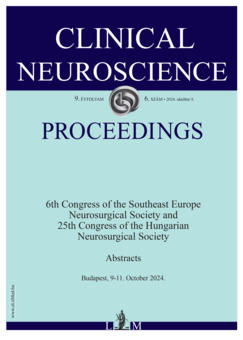Introduction: Magnetic resonance imaging (MRI) is the primary imaging techniques for the diagnosis of intracranial pathologies. Administration of contrast material is necessary in some type of intracranial lesions, such as neoplastic and inflammatory processes. Imaging is essential not only for the selection of adequate therapy, but also for follow-up and monitoring therapeutic efficacy.
Aims: Our goal was to evaluate the diagnostic utility of the contrast-enhanced fluid-attenuated inversion recovery (FLAIR) sequence in comparison with the post-contrast three-dimensional T1-weighted (3D-T1W) sequence.
Methods: We retrospectively reviewed the MR images and documentations of 17 patients, who had a post-contrast FLAIR sequence in addition to the routinely acquired post-contrast 3D-T1W measurement. The MRI examinations were performed with a 3T magnet (SIEMENS MAGNETOM Verio), and the patients received gadolinium-based contrast agent intravenously.
Results: The cases were classified into two main disease groups, intracranial tumours and central nervous system infections. Of the intracranial tumours, there were 5 brain metastases and 7 patients had primary tumours (2 meningiomas, an astrocytoma /grade 1/, 2 oligodendrogliomas /grade 3/ and 2 glioblastoma multiforme/grade 4/). There were 5 cases of infectious etiology (including meningitis, brain abscess and ventriculitis). We found that contrast-enhanced-FLAIR sequence could improve radiological diagnostic certainty being more effective in detecting leptomeningeal enhancement (carcinomatosis or infection) than the post-contrast 3D-T1W sequence. However, with regard to parenchymal tumour enhancement, there was no clear advantage of the contrast-enhanced-FLAIR sequence.
Conclusion: The contrast-enhanced FLAIR sequence can provide valuable diagnostic information yielding higher sensitivity in detecting leptomeningeal enhancement. Therefore, in the case of metastatic tumors and central nervous system infections, it should be included as a routine sequence in the examination protocol.




